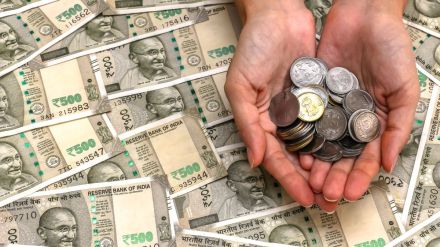India’s consumption is showing signs of revival with projections indicating a significant growth in consumer spending over the next few years. According to a report by HSBC Global Research, an estimated annual infusion of $30-40 billion into the economy over the next 18 to 24 months will give a boost to the country’s consumption landscape.
The potential surge is expected at a time when discretionary spending — across categories like automobiles, electronics, consumer goods, and dining — stood at an estimated $250 billion. Although it is difficult to determine which categories will benefit the most, on an average, HSBC said, consumption should improve as a result of higher disposable income.
What’s driving higher disposable income?
Now, what’s driving a higher disposable income? According to the HSBC report, India’s consumption will be driven by three key factors:
- Lower personal income tax starting from FY26 is expected to save taxpayers around $12 billion (as per the 2025-26 budget).
- The 8th Pay Commission is likely to bring a 15 per cent salary hike for government and defence employees from FY27, adding $18-26 billion in extra income. While some of this may be saved, most of it is expected to be spent.
- Falling interest rates, with a 75-100 basis point drop, could lead to $3-4 billion in mortgage savings. Lower inflation could increase these savings further.
However, these benefits will unfold gradually, and according to HSBC analysis, in the short term (next 6–9 months), no major increase in activity is expected.
Meanwhile, a Bloomberg report citing Julius Baer Group also estimated a revival in consumption in India. In an interview, Nitin Raheja, head of discretionary equities at Julius Baer India, said that lower- and middle-income segments will lead the pickup in India’s consumer spending, aided by slowing inflation, abundant monsoon rains and income-tax cuts.
Q4FY25 earnings show modest optimism
Furthermore, the fourth quarter of FY25 also turned out better than expected, said HSBC, even though earnings growth kept slowing. FY26 NIFTY earnings estimates were cut by around 5 per cent after the quarter—but this was less severe than many had feared. Currently, Bloomberg projects NIFTY earnings to grow by about 11 per cent in FY26 and 15 per cent in FY27.
In the broader market (top 500 listed companies), HSBC reported, around 61 per cent of companies beat their earnings (EPS) estimates in Q4FY25. This is better than the average of 59 per cent over the past eight quarters and shows a clear improvement from the previous two quarters, where only 54 per cent of companies exceeded expectations.
Barring banks and insurance, revenue during the fourth quarter grew by only 5.6 per cent on-year. Meanwhile, H2 growth appeared to have been only 5 per cent YoY compared to 7-8 per cent in H1. This was probably due to the low base in H1 because most indicators suggest a better H2 than H1, HSBC concluded.
